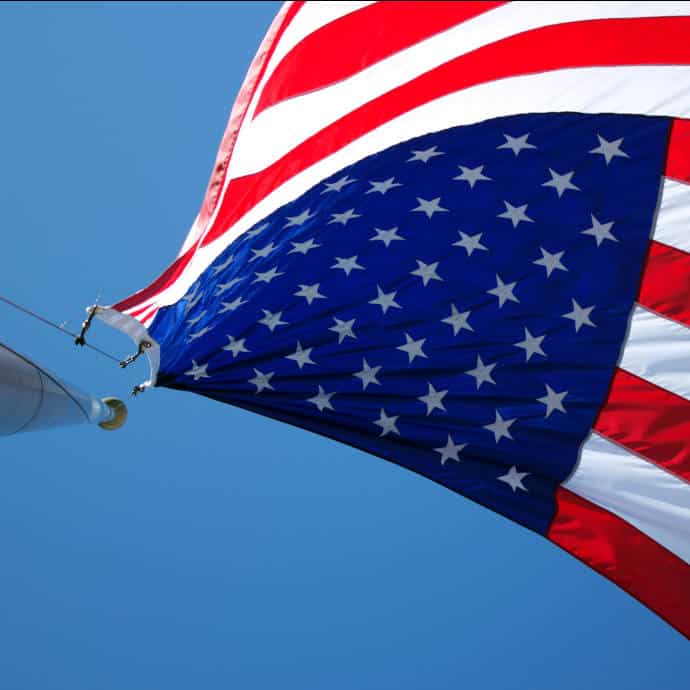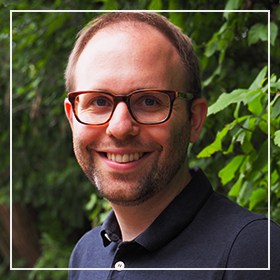Let us face it: most anthropologists in Europe and North America, this author included, are leftist-liberal, cosmopolitan people. It regularly escapes my colleagues’ and my comprehension, how people come to engage in political projects such as advocating “Brexit”, promoting “Obergrenzen”, fighting against “l’invasion migratoire”, demanding “Nederlands weer van ons”, or claiming to “make America great again”. The idea of voting for Nigel Farage, Frauke Petry, Marine Le Pen, Geerd Wilders, or Donald Trump feels nothing less than repulsive to us liberals. If we anthropologists are honest with each other we may be forced to admit that we probably have a much easier time understanding the cultural intricacies of Trobriand, Nuer, or Yanomami’s research partners than those of the political far-right in their own societies. And most anthropologists, myself included, probably have no great desire to empathize with them either.
In our times, with the far-right on the rise, this mindset may not be very wise. Ethnography means producing accounts of “the other”, that is those people we neither know nor easily understand, so that we ourselves and our audience may comprehend (though maybe not appreciate) it. Therefore it may be the great challenge of our discipline to write ethnographies of those that we find the hardest to empathizing with.
 The famous protagonist of the sociology of emotion, Hochschild, has taken up this challenge in her new book Strangers in Their Own Land: Anger and Mourning on the American Right. She investigates how life feels for people on the political right, therefore focusing on the emotions that underlie these particular politics (ix). Hochschild explains that her starting point for this book was an attempt to explore what she calls “the Great Paradox”. Starting from works such as Thomas Frank’s What’s the Matter with Kansas? (2004), Hochschild became puzzled by the fact that white people that are relatively poor, affected by industrial pollution, depend on public social services more than others, and rely on the power of organized labor are often voting for Republicans (a political party that favors tax cuts for the rich, oppose environmental regulation, want to get rid of social security and public health care and promote dismantling trade unions). Hochschild shows convincingly that the attempt to frame this issue as “people voting against their (economic) interest” is misleading and neglects the most important rule of ethnography: taking people’s emic accounts seriously.
The famous protagonist of the sociology of emotion, Hochschild, has taken up this challenge in her new book Strangers in Their Own Land: Anger and Mourning on the American Right. She investigates how life feels for people on the political right, therefore focusing on the emotions that underlie these particular politics (ix). Hochschild explains that her starting point for this book was an attempt to explore what she calls “the Great Paradox”. Starting from works such as Thomas Frank’s What’s the Matter with Kansas? (2004), Hochschild became puzzled by the fact that white people that are relatively poor, affected by industrial pollution, depend on public social services more than others, and rely on the power of organized labor are often voting for Republicans (a political party that favors tax cuts for the rich, oppose environmental regulation, want to get rid of social security and public health care and promote dismantling trade unions). Hochschild shows convincingly that the attempt to frame this issue as “people voting against their (economic) interest” is misleading and neglects the most important rule of ethnography: taking people’s emic accounts seriously.
Hochschild quickly finds out that what she terms as “empathy walls” separate her (a self-described California liberal Democrat) from those she comes to call her Tea Party friends. She defines an empathy wall as the obstacle of deeply understanding another person, so much so that one feels indifferent or even hostile to those who hold different beliefs (5). Hochschild wants to learn if it is “possible, without changing our beliefs, to know others from the inside, to see reality through their eyes, to understand the links between life, feeling, and politics: that is, to cross the empathy wall” (5).
Her book is an attempt to climb the empathy wall and to take her readers with her.
Hochschild tackles the Great Paradox by going to Louisiana–one of the most conservative, if not the most conservative state in the Unites States of America to conduct ethnographic research. Many people there aggressively oppose a paternalistic federal state, despite the fact “that the state ranks 49th out of 50 on an index of human development, that Louisiana is the second poorest state, that 44 percent of its budget comes from the federal government” (21). She decides to explore her question through the “keyhole issue” of environmental pollution. In her argumentation pollution does affect people across race, class and gender more equally than social security or health care.
Hochschild sees emotions as relational phenomena.
She contextualizes what people feel with their socio-economic surroundings: community, industry, media, church. The oil industry is regarded as one very important factor, which is replacing in many ways the slave-labor based plantation economy of the past. When she visits Oak Alley Planation, a tourist attraction in Southern Louisiana where people can delve in a romanticized 19th century Deep South, she has a discussion with an actor in a confederate soldier uniform. He tells her that “oil is the new cotton” and that he and his wife have experienced huge losses after a “tank farm” was built in their neighborhood. Since the pollution was unbearable, their house that was on the market could not be sold to anyone. He explains: “‘Confederates tried to get out from under the control of the federal government–to secede. But you can’t secede from oil. And you can’t secede form a mentality. You have to think your way into and out of that mentality. But they should get me in a different costume to talk about that’” (211). His critique of the oil industry is, however, a rare exception among her research partners.

For Hochschild, to understand the Great Paradox is to reconstruct “feeling rules”–a term she developed in The Managed Heart (1983). Feeling rules govern over who is supposed to feel what at what time, and how these feelings should be displayed. According to Hochschild, liberal and right-wing feeling rules clash in Louisiana because people have different deep stories. During a political event, she tells about her conversation with a Tea Party activist:
‘CNN is not objective at all’, she complains. ‘I turn it on for news and what I get is opinion.’’How can you tell straight news from opinion?’ I ask. ‘By their tone of voice,’ she explains. ‘Take Christiane Amanpour. She’ll be kneeling by a sick African child, or a bedraggled Indian, looking into the camera, and her voice is saying, ‘Something’s wrong, we have to fix it.’ Or worse, ‘we caused the problem.’ She’s using that child to say, ‘Do something, America.’ But that child’s problems aren’t our fault.’
The woman didn’t want to be told she should feel sorry for, or responsible for, the fate of the child. … The woman had her guard up. ‘No,’ she told herself in so many words, ‘That’s PC. That’s what liberals want listeners like me to feel. I don’t like it. … I don’t want to be told I’m a bad person if I don’t feel sorry for that child.’ The social terrain around her––industry, government, church, media––lifted focus away from such a child’s needs and from her own detachment from them. (128)
In her ninth chapter, in many respects the core of the book, Hochschild aims at reconstructing a deep story shared by many of the white middle class people in the South she has met and she shows how it differs from the deep story many liberals share–including most anthropologists.
Hochschild’s tells this deep story as an analogy of waiting in line (136-139). At the top of the hill waits the American Dream, but it’s hard to see over the bow of the hill when in line. The line is very slow and you feel that you deserve to move forward a little faster. But what you realize is that there are “line cutters,” (137) that is people who do not wait their turn for the American Dream but want to get ahead of you––and they do it with the help of the federal government: Blacks, women, immigrants, refugees, the brown pelican. And for you it does not feel like it is going forward at all. You see yourself as a compassionate person. But now you are asked to extend sympathy to all those people who have cut the line in front of you. These line cutters are helped by federal regulation–affirmative action, social security, health care– and you see your money running through a “liberal sympathy sieve” (137) you neither control nor agree with. This deep story is a story of betrayal and indignation. She checks her hypothetical “waiting in line” story with her conversation partners. “I live your analogy,” many of them reply (145).
Reconstructing a deep story means not least detecting what is left out of it, but how people have “structural amnesia” (Evans-Pritchard 1940). Race, class, gender remain hidden in this deep story. Yet Hochschild highlights that all deep stories need structural forgetting to “feel true”.

In the second half of her book, Hochschild meticulously describes white middle-class people she has met and befriended. They vote for the Tea Party and share a common deep story: “the weary, aggravating, and ultimately enraging wait for the American Dream” and “a visceral hate for the ally of the ‘enemy’ cutters in line–the federal government” (151). Hochschild describes different types of people she encountered that represent different ways of dealing with the shortcomings of their political party, specifically when it comes to industrial pollution. There is “the team loyalist” (Chapter 10) who stays with the team, even if it may be wrong sometimes. He or she takes pride in maintaining an endurance self that decides to stick with community, industry, church, media, and party–deciding to set aside and accept existing problems for the good of the team. There is also “the worshipper” (Chapter 11) who takes pride in having “a capacity for meaningful renunciation” (177). The worshipper believes in the American Dream and says: “pollution is the price we pay for capitalism”. It’s not something you like, but you take pride in “the act of renouncing an important desire” (177). Then there is “the cowboy” (Chapter 12) who accommodates problems “out of respect for bravery”. The cowboys are, she writes, “not themselves victims. They were braving the worst of an industrial system, the fruits of which liberals enjoyed from a distance in their highly regulated and cleaner blue states” (191).
In Chapter 15 Hochschild describes a Donald Trump rally in Louisiana (Trump won Louisiana in the primary with 41 percent, beating the evangelical candidate Ted Cruz). Tapping into the deep story of many in the South, Trump is understood to be an ‘emotions candidate’ who evokes dominance, bravado, clarity, national pride, and personal uplift (225), hence producing “collective effervescence” (Durkheim 1965 [1915]). Often Trump points to protestors, demonizes them and calls for expelling them from the event. This is an integral part of the affective atmosphere he creates: By casting out the ‘bad one’ he helps his fans to unite in a shared sense of being the ‘good ones’– no longer “strangers in their own land” (226). At the Trump rally people are collectively protesting against liberal feeling rules imposed on them against their will. “People think we’re not good people if we don’t feel sorry for blacks and immigrants and Syrian refugees,” one of the Trump supporters tells Hochschild, “but I am a good person and I don’t feel sorry for them” (227).
The people she describes are not cold-hearted, mean, egoists. They are compassionate and human. She gives the reader a glimpse of how it could be to understand and empathize with somebody without coming to an agreement: “We, on both sides, wrongly imagine that empathy with the ‘other’ side brings an end to clearheaded analysis, when, in truth, it’s on the other side of that bridge that the most important analysis can begin” (xi).
It may be wise to remember that writing about “the other” is most challenging when “the other” does not only feel foreign to our audiences, but also to ourselves. If anthropologists have a political role to play during the rise of radical right wing politics, it is aiming to understand what we are afraid of understanding too well. It may lead to a kind of self-critique that the usual display of anthropological self-reflexivity may gloss over, that is that we not only have “preconceptions”, but we have a deep story and feeling rules of our own.
Slavoj Žižek, the famous neo-Marxist philosopher, recently remarked in a BBC television interview:
I’ll say something which again may surprise you. The liberal left engaged in something quite similar, its own version of the so-called post-factual approach. … What’s the favored type of political commentary now for liberal leftists? Jon Stuart, John Oliver, and so on. This kind of half-joking, very arrogant, comic commentaries …. This is the ultimate failure of the left for me: this patronizing making fun of the ordinary people.
Arlie Hochschild has managed to present an empathetic account of Tea Party members without making fun of them while still disagreeing. By doing so she has shown what ethnography can do, and should aspire for.
References
Durkheim, Emile (1965 [1915]) The Elementary Forms of Religious Life. New York: The Free Press.
Evans-Pritchard, E. E. (1940) The Nuer: A Description of the Modes of Livelihood and Political Institutions of a Nilotic People. Oxford: Clarendon Press.
Frank, Thomas (2004) What’s the Matter with Kansas? How Conservatives Won the Heart of America. New York: Metropolitan Press.
Hochschild, Arlie Russel (1983) The Managed Heart: The Commercialization of Human Feeling. Berkeley: University of California Press.
Arlie Russell Hochschild. 2016. Strangers in Their Own Land. Anger and Mourning on the American Right. The New Press. 368 pp. Hc: $ 27,95. ISBN: 978-1-62097-225-0.



